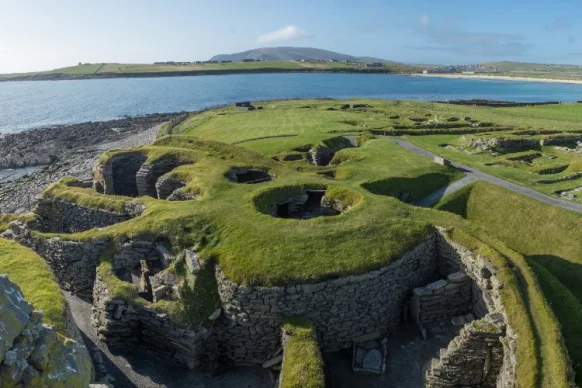
About Big Pit National Coal Museum
Big Pit National Coal Museum in Wales tells the story of the site that was once at the heart of the British coal industry. Located within a former coal mine, the museum explores both the history of this industry and the experiences of those who worked in it, alongside the wider significance of the Blaenavon coal networks.
Big Pit National Coal Museum history
Big Pit began its life as a working iron mine, initially hand dug around 1810 – five decades before the invention of dynamite. Its shallow iron deposits meant that the mine was relatively near to the surface, and it was given the name Engine Pit Level. Though no contemporary records of this first iron mine survive, in the 1960s miners explored the level and found an old mine cart that is today displayed in the museum.
The first record of a mine called Big Pit exists from 1881, at which time it was a working coal mine. Its name derived from the pit’s elliptical shape and vast proportions, measuring 18ft by 13ft, making it the first mine in Wales big enough to allow two tramways. Over the next few decades the mine was expanded to reach deeper coal seams, and at its peak in 1923 had 1,399 men working there. The mine produced House Coal, Steam Coal, Ironside, and Fireclay, and at one point was exporting as far as South America.
In 1939, the Pithead Baths were installed at the mine, meaning miners no longer had to trudge home to their families caked in dirt – this risked illness and required the time-consuming manual filling of baths at home.
Over the second half of the 20th century the number of workers at Big Pit dwindled, before on 2 February 1980 it closed for good. It was reopened as a museum in 1983 however, and in 2000 was named a UNESCO World Heritage Site as part of the wider Blaenavon industrial area, in recognition of its 19th century role as the world’s major producer of iron and coal.
Big Pit National Coal Museum today
A tour of the Big Pit National Coal Museum offers a real insight into this world, allowing visitors to walk through the old mining buildings and even take an underground tour 300 feet down into an old mineshaft. Tours are run by former coalminers, who provide personal interpretations of the site’s history, while above ground there are also exhibits about coal mining history, dealing with issues such as nationalisation, trade unions and safety.
A number of the mine’s historic buildings may be explored including the blacksmith’s forge, miners’ canteen, stables, and winding house. The Pithead Baths in particular offer an insight into the daily life of the miners, in which the locker rooms and showers that once helped the pit’s workers to scrub off the thick coal dust remain intact.
Getting to Big Pit National Coal Museum
Big Pit National Coal Museum is located in Blaenavon in Wales, near the Brecon Beacons National Park. It lies just south of the A465, and is signposted from its first exit, or alternatively can be reached via the A4043 from the southeast. The nearest train stations are Abergavenny and Pontypool & New Inn, both around 7.5 miles away, while the Stagecoach 30 bus service stops directly at the site.
Featured In

10 of the Best Historic Sites in the Brecon Beacons
From ancient stones to medieval grandeur, discover the best historic sites of Brecon Beacons National Park.

Torfaen's Historic Sites
Discover one of the hearts of the Industrial Revolution by exploring the county that made Wales a global centre for iron production.




















